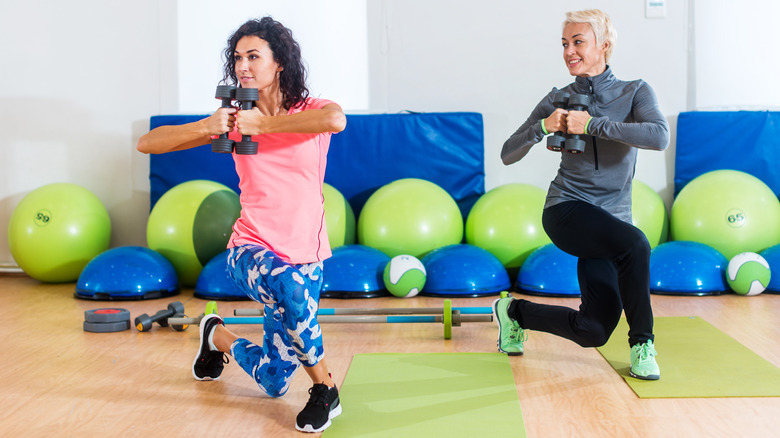The Big Problem With Curtsy Lunges
Lunges are a great way to strengthen your legs and glutes. There are many lunge variations that can target specific muscles in the lower body and curtsy lunges are one of the most popular. This move can be performed by doing a reverse lunge and crossing one leg behind the other to create an overemphasized curtsy movement (via Livestrong). While curtsy lunges can give your gluteus maximus a solid workout, they also put you at a high risk of injury.
"Curtsy lunges fall under the category of biomechanically poor for a lot of people, especially anyone with movement restrictions in the ankle, knee, hip or back as well as injuries to any of these structures — in other words, most people," certified strength and conditioning specialist Jake Harcoff, CSCS, told Livestrong. Curtsy lunges can put a great deal of stress on the knees as they are required to twist when performing this move. Many people also rush through this movement, which increases the risk of injury even more.
You can get similar effects with other lunge variations
Fortunately, there are plenty of other lunge variations that can strengthen your legs without harming your knees. A reverse lunge is similar to a curtsy lunge but safer on your lower body. "And though it may stress the knee joint less, it still delivers big results when it comes to muscle and strength development," personal trainer Simon King told Men's Journal. "It can also be used as an assessment tool to evaluate muscle and structure imbalances while developing balance, strength, and hip flexibility through movement." A reverse lunge is performed the same way as a regular lunge, but instead of stepping forward, you step backward.
Other lunge variations to try include static lunges and walking lunges. To perform a static lunge, get into a split stance lunge position. Lower your body until your knee almost touches the floor and return to starting position to complete one rep. Both feet should remain firmly planted on the ground for the duration of the exercise. Walking lunges involve moving forward in a lunge position during every step.


